It all began in 2019 when I came across Curious Marc’s YouTube Channel and his series on the restoration of one of the original mid-1960’s era NASA Moon Mission Apollo Guidance Computers (AGC). He and a team of dedicated volunteer engineers who also support other projects at the Computer History Museum (chm.org) in Northern California worked for months to restore and repair this artifact in time for the 50th anniversary of the Apollo 11 moon landing. That project will be the subject of other posts here.

The Apollo Guidance Computer designed by MIT and built by Raytheon was the first “portable” self contained digital computer (70 lbs) and also the first computer to use integrated circuits. These computers navigated and managed the flights for all of the Apollo crews on missions to the moon in the late 1960’s and early 1970’s.
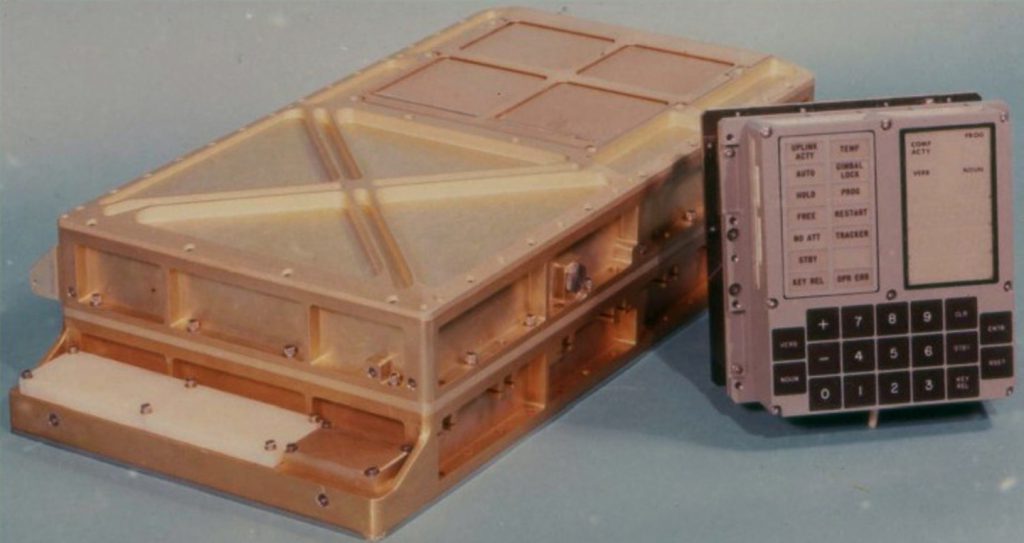
The Integrated Circuit used almost exclusively in the Apollo Guidance Computer was a 10 pin dual 3 input NOR gate made by Fairchild Electronics. It is possible to build almost any logic circuit with just NOR gates, which is why they are known as a “universal” logic element.
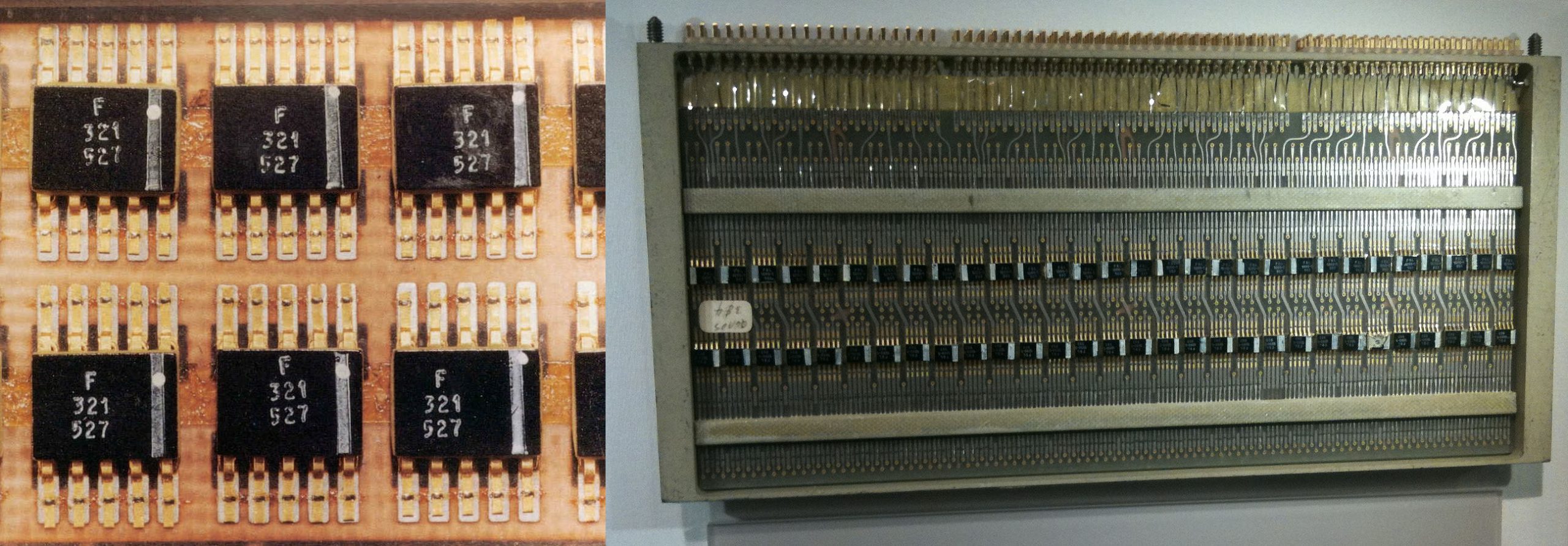
Flatpack Fairchild dual 3-input NOR gate ICs (left) – AGC Logic Module (right).
Each 321 IC was a dual 3-input NOR gate built with 6 transistors total. Each plug-in AGC Logic Module contained 2 PCBs back-to-back with up to 60 IC’s per board. Up to 40 logic modules could be installed in the Apollo Guidance computer. Each module had a specific function.That was a potential of 28,800 logic gates built with up to 86,400 transistors! Of course, not all modules were fully loaded based on their function.
I watched the story unfold on YouTube as the restoration team encountered many obstacles and overcome each one to finally succeed – resulting in the only fully functional unit remaining of the 52 original Apollo Guidance Computers. Of course, demonstrations were part of the Apollo Moon Landing 50 year Anniversary. Afterwards, I thought of my own personal experiences with the computer revolution in the 1960’s and 1970’s.
LM Ericsson ARD-561 PABX
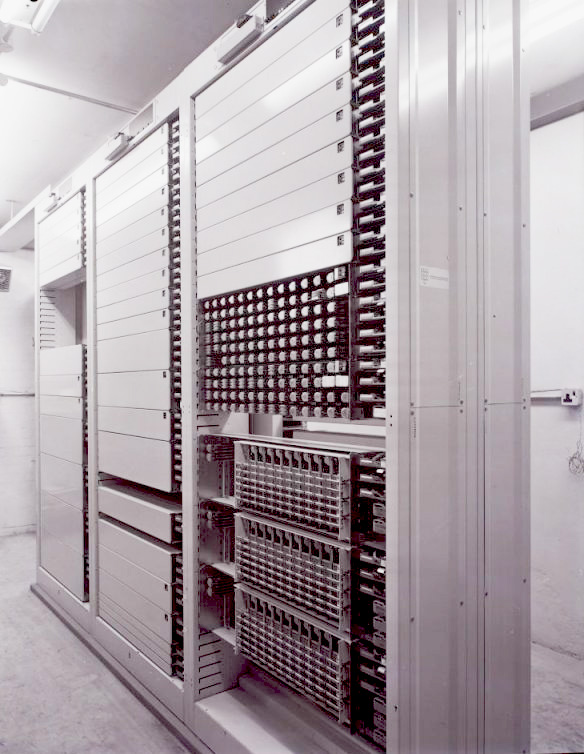
Solving a Problem
When I was just out of college in the early 1970’s, working in my first corporate job as a telecommunications systems engineer, I was asked to solve a problem. It required capturing and recording calling and usage data from an electro-mechanical (relay & crossbar) ARD-561 business telephone system made by L.M. Ericsson in Sweden. Essentially, I needed to build a system that would provide an individual usage report (or bill) for each user’s phone extension in the business.
Building a product that could process the proprietary 48 vdc signals inside the Ericsson ARD-561 PABX telephone system and turn them into usable information – a paper report or data file – for a business to use was not an easy task in 1970. It would normally require a mainframe computer or traditional scientific minicomputer and expensive interface systems or custom designed hardware that would also be very expensive. Both alternatives were impractical since this would be a low volume product – sold in very small quantities. Remember that in 1970 there was no such thing as a personal computer, a micro-processor, or even a “computer chip”.
This was only a couple of years after the 1969 Apollo moon landing, which had used 50% of the United States’ entire production of the newly developed “integrated logic circuits” to build the computers for the mission. There were logic chips with simple gates like the Apollo computers used, and a very few medium scale integration (MSI) – slightly more complex integrated circuits – that had specific functions like communications (UART) or arithmetic (ALU) chips. The new Integrated Circuit industry was just beginning to design and build large scale integration (LSI) chips with the thousands and tens of thousands of gates of the first “micro” processors like the Intel 4004-8008, 8080 and other later CPU designs. The Intel 8080 microprocessor that started the personal computer revolution was released in April, 1974. See Microprocessors …
The first Alpha/LSI model was a single board computer that used Programmable Logic Arrays (PLAs) to achieve the reduction in size to a single circuit board. However, the most successful version of the Alpha/LSI was the LSI-2 which used a full size CPU board with a 1/2 card daughter board and a second 1/2 card “CPU Options daughter card” for TTY/Serial I/O, Real Time Clock, Autoload, and parity options. The CPU only takes one full slot, but physically is two stacked full cards. These cards were mostly designed with discrete 7400 series TTL logic chips, and a few previous generation 830-850 DTL logic ICs.
In fact the very name “LSI or Large Scale Integration” in the LSI-2 computer model was a misnomer – “Alpha-LSI” – because the only moderately “complex” non-logic ICs in its original design were MSI “Medium Scale Integration” chips like an early Western Digital UART chip (1602B) for the serial interface and an Intel ALU chip set (74181) for math operations. Later, some I/O cards like the floppy disk interface also used special purpose ICs that were early LSI designs.
I had noticed ads in 1972-1973 Electronic Design magazines featuring a “naked” Alpha 16 minicomputer costing less than $1500 (in quantity) designed for use in embedded systems. Their advertising tag line was “The computer that’s a component.” I thought this was a great idea and could be the key to building a call accounting system for an electro-mechanical (non-digital) business telephone system.
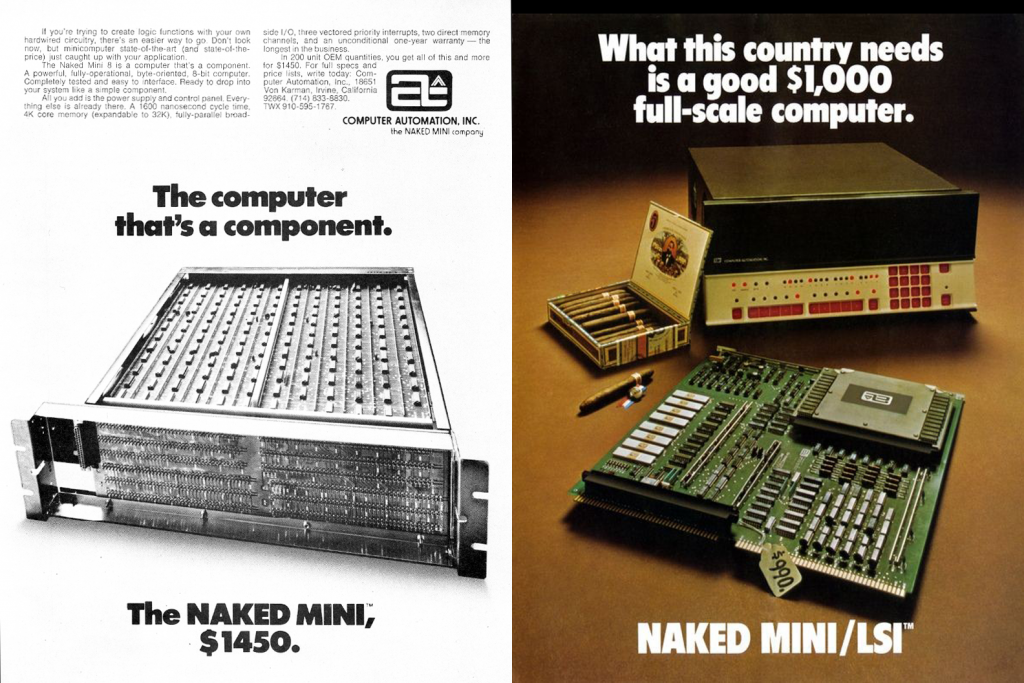
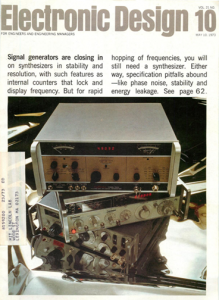
I successfully designed a traffic monitoring system that used a Computer Automation Alpha 16 (and later the Alpha/LSI-2) minicomputer as an embedded component to monitor the signals inside the phone system and produce reports on calls made by each extension. It was sold to a number of large scale businesses throughout the US. At the time, it was the only call accounting system of its kind besides the CENTREX system, which was introduced by the Bell System in 1960, and relied on the toll billing systems at the central office – not on site equipment at the business.
In memory of this innovative technology – the first economical commercial minicomputers that you could use inside another product as a component – I have decided to find and restore an Alpha/LSI-2 minicomputer just like those I used back then.
Since August, 2019, when I purchased a Computer Automation Alpha LSI-2 minicomputer I found on eBay.com, I have been scouring the Internet for information, hardware, and software for the almost forgotten Computer Automation “Naked Mini” Alpha/LSI-2 minicomputers from the mid-1970’s.
This is the story of that quest…


